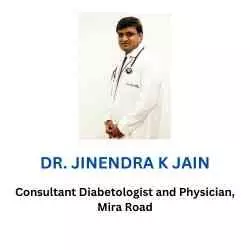
An Instagram post claims that magnesium deficiency is the number one cause of high blood pressure. The claim by the user is Misleading
Claim
In an Instagram reel, it is claimed that magnesium deficiency is the number one cause of high blood pressure. In the reel by user swetha._.sunil, it is said, “The single most common cause of high blood pressure is a deficiency in the mineral magnesium. You have two types of blood vessels in the human body. You have arteries and you have veins. And arteries carry blood away from the heart, veins carry blood back to the heart. Well, what’s the difference? Well, there’s one significant difference between the two. Arteries have muscles, veins do not. Why does an artery have muscle? Because God is smart. When the heart pumps blood, it goes into the artery and the muscle in the artery constricts and relaxes. constricts and relaxes constriction relaxes in order to help the heart pump the blood. That’s fantastic. Well, how does the muscle constrict and relax? The same way that a bicep constrict and relax or any muscle in the body, it’s done through magnesium and calcium. If you do not have enough magnesium, the muscle will constrict, but it cannot relax. So it stays constricted. Now, if you have a garden hose and there’s water coming out of it and you squeeze the hose just a little bit, the water comes out faster, right? It’s because you’ve decreased the volume, the pressure goes up. So when the artery gets collapsed because of not enough magnesium, the blood pressure spikes. So, you don’t have high blood pressure because you have a circulatory system. You don’t have high blood pressure because you have a bad gene. You don’t have high blood pressure because you’re getting older or because you have a voodoo curse. You have high blood pressure because your body ran out of the stuff it needed to maintain proper blood pressure. Period.”
The reel can be accessed here.
Fact Check
The claim by the user is Misleading. While magnesium deficiency contributes to high blood pressure, no scientific evidence or medical consensus supports the claim that it is the number one cause of blood pressure.
What is High Blood Pressure?
According to WHO, High blood pressure or Hypertension is when the pressure in blood vessels is high (140/90 mmHg or higher). It is common but can be serious if not treated. The risk factors of hypertension are genetics, overweight or obese, physical inactivity, age and consumption of alcohol.
Modifiable risk factors include unhealthy diets such as excessive salt consumption, a diet high in saturated fat and trans fats, low intake of fruits and vegetables, physical inactivity, consumption of tobacco and alcohol, and being overweight or obese. In addition, there are environmental risk factors for hypertension and associated diseases, where air pollution is the most significant.
Non-modifiable risk factors include a family history of hypertension, age over 65 years and co-existing diseases such as diabetes or kidney disease.
What are the causes of High Blood Pressure?
High blood pressure (hypertension) is a multifactorial condition influenced by both genetic and lifestyle factors. Several risk factors contribute to its development. Primary hypertension, the most common type, is linked to aging, family history, race (with African Americans being at higher risk), and lifestyle choices such as smoking, excessive alcohol consumption, high salt intake, lack of physical activity, and obesity. Secondary hypertension, on the other hand, results from underlying conditions like chronic kidney disease, hormonal imbalances (e.g., thyroid disorders, Cushing’s syndrome), obstructive sleep apnea, and certain medications such as NSAIDs and decongestants. Managing hypertension requires early detection, lifestyle modifications, and, in some cases, medical intervention to prevent serious complications like heart disease and stroke.
What is Magnesium?
Magnesium is an essential mineral in the body that functions as a cofactor in over 300 enzyme systems regulating biochemical processes such as protein synthesis, muscle and nerve function, blood glucose control, and blood pressure regulation. It is crucial for energy production, DNA/RNA synthesis, and bone structure. Magnesium also facilitates calcium and potassium transport across cell membranes, influencing nerve impulses, muscle contraction, and heart rhythm. About 50–60% of magnesium is stored in bones, with less than 1% in blood serum, where levels are tightly regulated by the kidneys.
What is the role of Magnesium in maintaining blood pressure?
Magnesium plays a crucial role in maintaining blood pressure by acting as a natural calcium channel blocker, which helps relax blood vessels and reduce vascular resistance. It also blocks sodium attachment to vascular smooth muscle cells, preventing excessive contraction. Additionally, magnesium enhances vasodilating prostaglandin E (PGE) production, binds potassium cooperatively, and increases nitric oxide levels, all of which contribute to improved endothelial function and vasodilation. These mechanisms collectively lead to a reduction in blood pressure, highlighting magnesium’s essential role in cardiovascular health.
Does magnesium deficiency cause high blood pressure?
Yes, magnesium deficiency has been linked to high blood pressure. Several meta-analyses of prospective cohort studies and randomized controlled trials indicate an inverse relationship between magnesium intake and hypertension risk. Magnesium supplementation has also shown a blood pressure-lowering effect. The exact mechanisms remain unclear, but magnesium is thought to help regulate vascular tone, endothelial function, and electrolyte balance, all of which contribute to blood pressure control. However, there is no scientific evidence or medical consensus to support the claim that magnesium deficiency is the number one cause of high blood pressure.
Is magnesium deficiency the number one cause of high blood pressure?
Magnesium deficiency may contribute to high blood pressure, but it is not the leading cause. While research supports magnesium’s role in cardiovascular health, hypertension is a complex condition influenced by multiple factors, including diet, lifestyle, and genetics. Hence, the claim by the user is Misleading.
Research indicates that magnesium is essential for cardiovascular health, with its deficiency being associated with an increased risk of hypertension and related complications. A study by Ligia J. Dominguez et al. suggests that individuals with hypertension are particularly vulnerable to magnesium deficiency due to multiple physiological mechanisms, which may partly explain the higher prevalence of the condition and its long-term effects.
Another study published in Advances in Chronic Kidney Disease reported that inadequate dietary magnesium intake has been linked to a higher risk of developing hypertension, as observed in prospective cohort studies.
Magnesium has been extensively studied for its potential antihypertensive effects. A study conducted by Mark Houston et al. suggests that consuming 500 mg to 1000 mg of magnesium daily may contribute to lowering blood pressure and assist in managing hypertension effectively.
Magnesium does play an important role in lowering blood pressure but no scientific evidence or medical consensus backs the claim that its deficiency is the number one cause for high blood pressure.

In a conversation with the Medical Dialogues Fact Check Team Dr. Jinendra K Jain, Consultant Diabetologist and Physician, Mira Road said, “Magnesium deficiency is not the number one cause of high blood pressure (hypertension) in many people. While it is true that magnesium deficiency plays a significant role in regulating the functions of the blood vessels, various factors can contribute to high blood pressure. The most common factors that can influence high blood pressure include increased salt intake in daily meals, being overweight, lack of physical activity, taking too much stress, genetics, hormonal imbalances, and kidney diseases. The low levels of magnesium can significantly contribute to poor blood vessel function but it can rarely be the reason for hypertension. High blood pressure can be easily managed with the combination of lifestyle modification, and medications as prescribed by the doctor. Ensure that you eat well-balanced meals that are rich in magnesium such as nuts, seeds, leafy green vegetables, and whole grains. These foods can help support your heart health and prevent or manage high blood pressure. Along with diet focus more on staying active by exercising regularly and maintaining a healthy weight. Avoid eating foods with high sodium. Limiting your salt intake can be helpful. Always take medications prescribed by the doctors only for the betterment of your health.”

Dr Swarup Pal, Cardiovascular, Thoracic and Transplant surgeon at Gleneagles Hospital, Mumbai further added, “Hypertension is commonly seen in adults and youngsters and is linked to a wide range of health problems. A large number of people suffer from heart attack, stroke, kidney disease, vision loss, heart failure, and cognitive decline due to high blood pressure. One can suffer from hypertension because of many factors not only magnesium deficiency. Low magnesium levels can contribute to blood pressure issues, several other factors are also the culprits behind high blood pressure. Too much salt can increase fluid retention, raising blood pressure. Moreover, a sedentary lifestyle weakens the heart and increases the chances of high blood pressure. Obesity can pressurize the heart causing hypertension. Likewise, being stressed for a longer period due to professional or personal issues can also cause hypertension which will make one prone to a heart attack or a stroke. Don’t forget other factors such as smoking, and alcohol that damage blood vessels and lead to hypertension. A family history of high blood pressure can also put one at risk of hypertension. Timely management of high blood pressure is key for successful outcomes. Take medication as recommended by the doctor and check your blood pressure from time to time. If the underlying cause behind hypertension is magnesium deficiency then eat foods like nuts, seeds, legumes, bananas, spinach, avocado, and whole grains. Take magnesium supplements as per the doctor’s recommendation. High uncontrolled sugars in long standing diabetes causes hardening of arteries ( peripheral Vascular disease) which again predisposes to hypertension”
Medical Dialogues Final Take
Magnesium deficiency may contribute to high blood pressure (hypertension), but it is not the number one cause. Hypertension is a multifactorial condition influenced by genetics, diet, lifestyle, and other medical conditions. Further, no scientific evidence or medical consensus supports the claim that magnesium deficiency is the number one cause of high blood pressure.
Hence, the claim by the user is Misleading.












